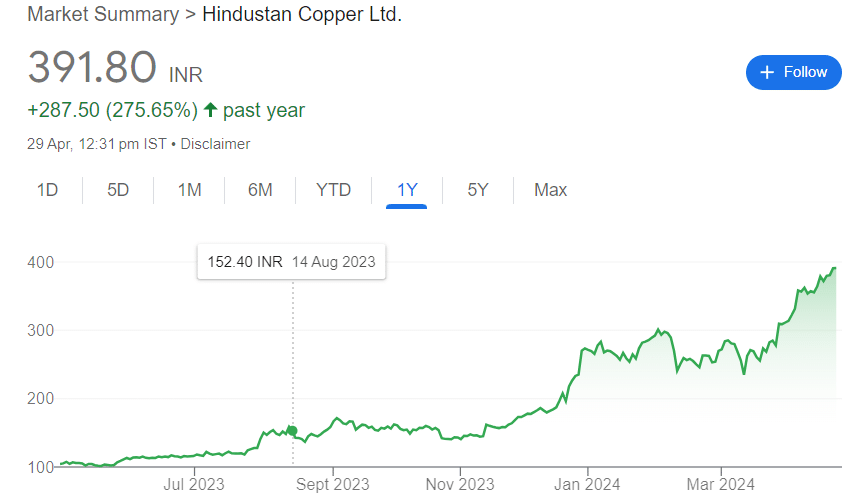Coal India Share Price RSI: Discover the insights into Coal India’s share price RSI, its implications, and potential investment opportunities. Read on to explore detailed analysis and expert opinions.
Table of Contents
Introduction: Coal India Share Price RSI
Investing in stocks often involves a thorough analysis of various indicators, one of which is the Relative Strength Index (RSI). When it comes to understanding the dynamics of Coal India’s share price RSI, investors seek clarity and actionable insights. In this comprehensive guide, we delve into the intricacies of Coal India’s share price RSI, offering expert analysis, practical advice, and valuable perspectives for investors. It is useful in Coal India Share Price Prediction .
Understanding Coal India Share Price RSI
Coal India, a leading player in the coal mining industry, attracts investors’ attention due to its significant role in India’s energy sector. The Relative Strength Index (RSI) is a momentum indicator that measures the speed and change of price movements. In the context of Coal India’s shares price, RSI provides insights into the stock’s overbought or oversold conditions, aiding investors in making informed decisions.
Coal India’s share price RSI reflects the balance between buying and selling pressure in the market. A high RSI suggests the stock is overbought, indicating a potential reversal or correction in price, while a low RSI indicates oversold conditions, signaling a possible uptrend. Understanding these dynamics empowers investors to time their trades effectively and capitalize on market opportunities.
Analyzing Coal India Share Price RSI Trends
Analyzing historical trends of Coal India’s share price RSI unveils valuable patterns and signals for investors. By examining RSI movements over different timeframes, investors can gain insights into the stock’s volatility, momentum, and potential price reversals.
Tracking Coal India’s share price RSI over various periods, such as daily, weekly, or monthly, provides a holistic view of the stock’s performance. For instance, a consistent uptrend in RSI accompanied by increasing trading volumes may indicate strong bullish momentum, while divergences between RSI and price movements could signal trend reversals. By incorporating RSI analysis into their investment strategies, investors can enhance their decision-making process and optimize portfolio performance.
Leveraging RSI for Investment Strategies
Integrating RSI into investment strategies requires a nuanced understanding of market dynamics and risk management principles. Whether employing RSI as a standalone indicator or in conjunction with other technical analysis tools, investors can utilize RSI signals to identify potential entry and exit points, manage risk, and optimize portfolio allocation.
Incorporating RSI-based strategies, such as RSI divergence analysis or overbought/oversold conditions, allows investors to navigate volatile market conditions with confidence. By combining RSI signals with fundamental analysis and market sentiment indicators, investors can develop robust investment strategies tailored to their risk tolerance and investment objectives. Additionally, employing stop-loss orders and position-sizing techniques can help mitigate risks associated with market fluctuations, ensuring disciplined and strategic investment decisions.
FAQs (Frequently Asked Questions)
How does RSI help in evaluating Coal India’s stock performance? RSI provides insights into the strength and direction of price movements, helping investors gauge the stock’s momentum and identify potential trend reversals.
Can RSI be used as the sole indicator for investment decisions? While RSI offers valuable insights, it’s essential to complement it with other technical analysis tools and fundamental research to make well-informed investment decisions.
What are the key factors influencing Coal India’s share price RSI? Factors such as market sentiment, industry trends, macroeconomic indicators, and company-specific developments can impact Coal India’s share price RSI.
How often should investors monitor Coal India’s share price RSI? Investors should monitor RSI regularly across different timeframes to capture evolving market dynamics and make timely adjustments to their investment strategies.
What are the potential risks associated with relying solely on RSI for investment decisions? Overreliance on RSI without considering other factors such as fundamental analysis or market sentiment can lead to suboptimal investment outcomes and increased risk exposure.
How can investors interpret divergences between RSI and price movements in Coal India’s stock? Divergences between RSI and price movements can signal potential trend reversals or shifts in market sentiment, prompting investors to reassess their investment thesis and adjust their strategies accordingly.
Conclusion: Coal India Share Price RSI
In conclusion, understanding Coal India’s share price RSI is integral to making informed investment decisions in the stock market. By leveraging RSI as a powerful technical indicator, investors can gain valuable insights into market dynamics, identify potential opportunities, and manage risks effectively. With a comprehensive understanding of RSI analysis and its implications, investors can navigate the complexities of the stock market with confidence and achieve their financial objectives.
also read : Technical analysis of Coal India Shares











2 thoughts on “Coal India Share Price RSI: Unveiling Insights and Analysis”
Comments are closed.